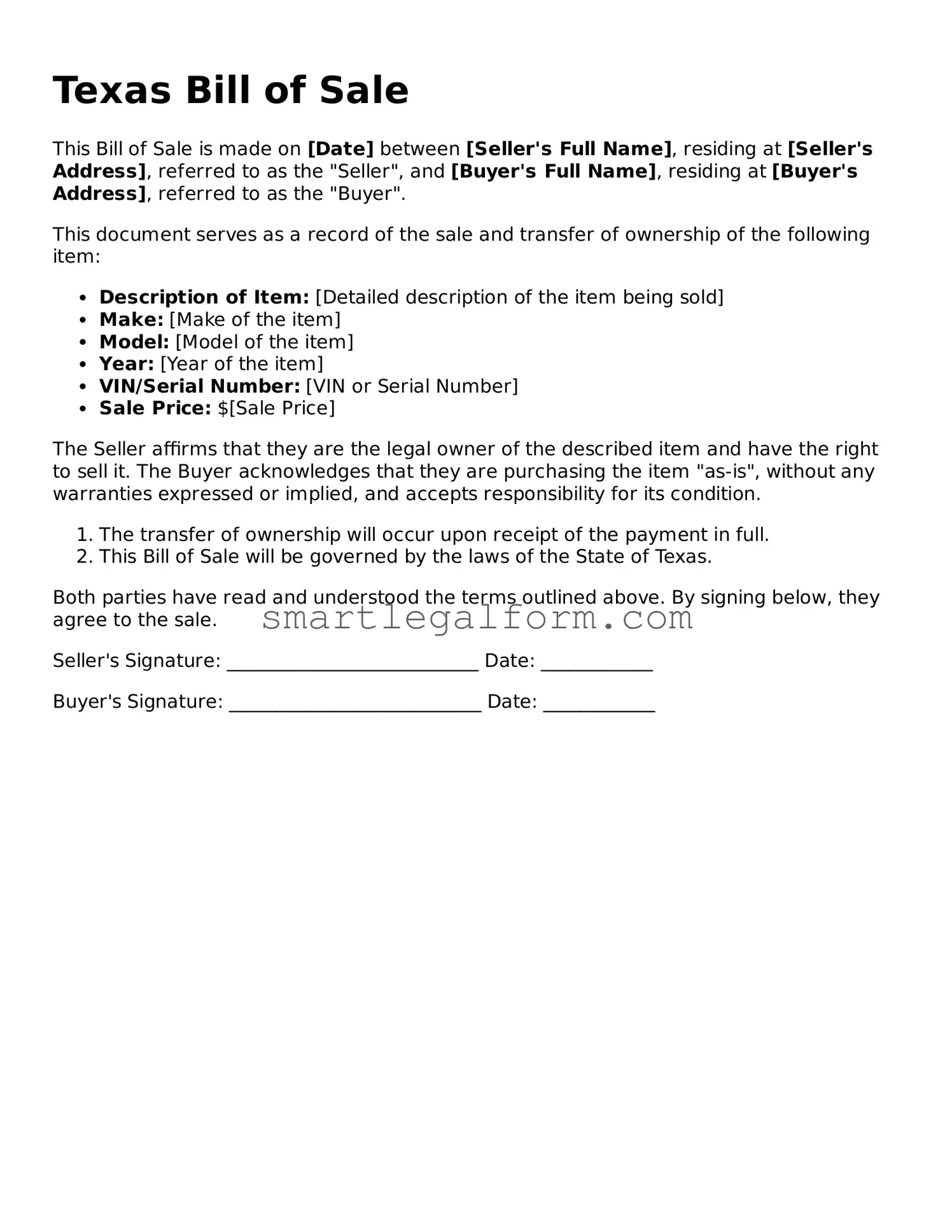When filling out the Texas Bill of Sale form, individuals often overlook important details that can lead to complications later on. One common mistake is failing to include all necessary information about the buyer and seller. Each party's full name, address, and contact information should be clearly stated. Omitting any of these details can create confusion and may affect the validity of the document.
Another frequent error is neglecting to provide a thorough description of the item being sold. It is essential to include specific details such as the make, model, year, and Vehicle Identification Number (VIN) for vehicles. For other items, include any relevant serial numbers or distinguishing features. A vague description can lead to disputes regarding what was actually sold.
People also often forget to indicate the sale price clearly. The amount should be written in both numeric and written form to avoid misunderstandings. If the price is not clearly stated, it may raise questions about the terms of the sale later on.
Additionally, many individuals fail to sign the form. Both the buyer and seller must sign the Bill of Sale for it to be legally binding. Without signatures, the document lacks the necessary authority and may not be enforceable in the event of a dispute.
Another mistake is not dating the Bill of Sale. Including the date of the transaction is crucial. It establishes when the sale occurred, which can be important for legal and tax purposes. Without a date, the document may lack clarity regarding the timeline of the transaction.
Some people mistakenly assume that a notary signature is not necessary. While it is not always required, having the Bill of Sale notarized adds an extra layer of protection and authenticity. It can be especially beneficial in cases involving significant transactions or disputes.
Furthermore, individuals sometimes forget to keep a copy of the completed Bill of Sale for their records. It is essential to retain a copy for future reference, especially if questions arise about the transaction. Having documentation can help resolve any potential issues.
People may also neglect to check for any specific state requirements that apply to their transaction. Different types of sales may have unique regulations, and failing to comply with these can lead to legal challenges down the road. Researching state laws before completing the form is advisable.
Lastly, many individuals do not review the completed Bill of Sale for errors before submitting it. Typos or incorrect information can invalidate the document or lead to misunderstandings. Taking the time to carefully review the form can prevent unnecessary complications in the future.
